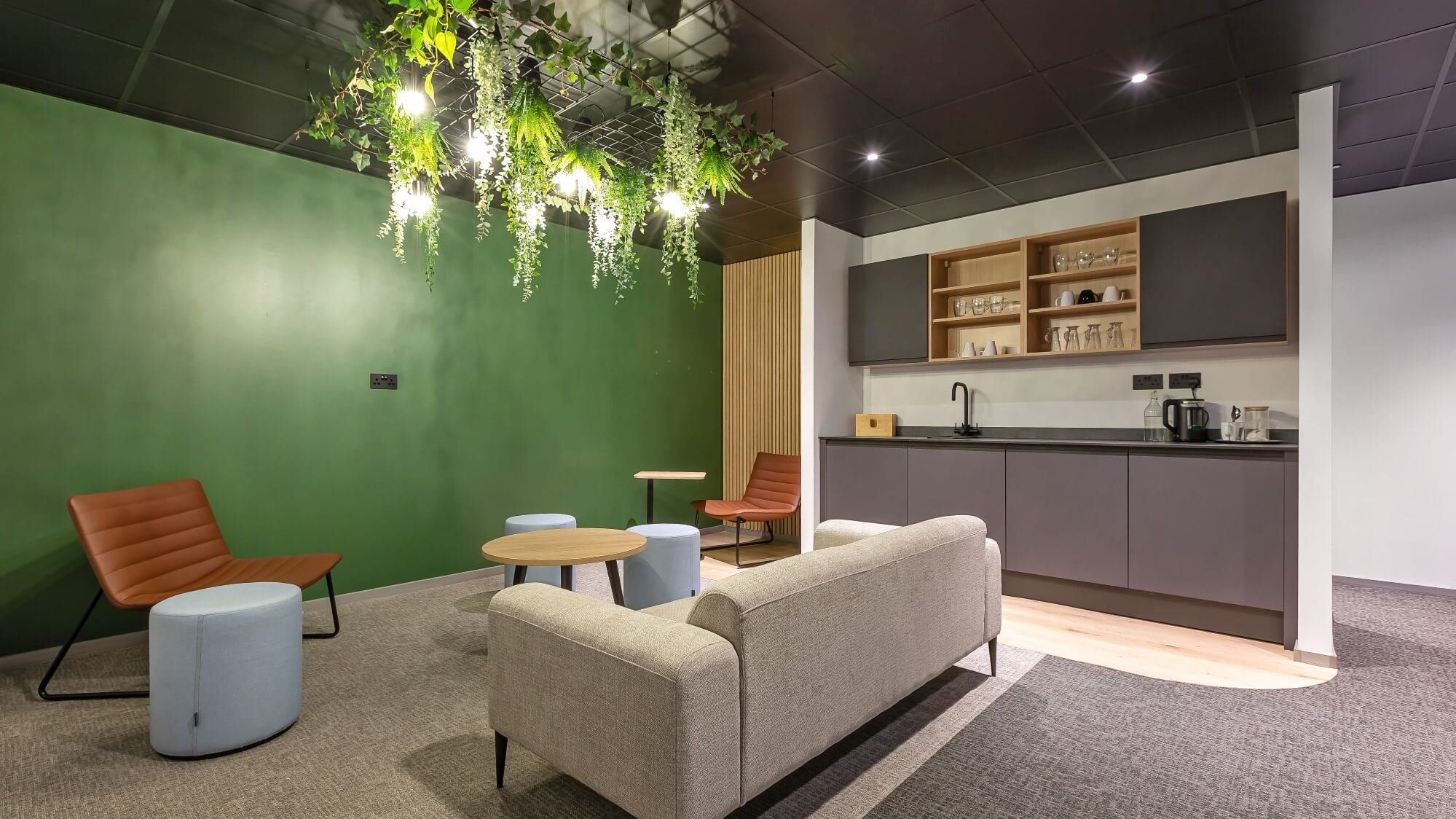Enhance Productivity In The Workplace
Workplace interior design has a huge influence on staff morale, productivity, collaboration and creativity. Modern companies are eager to create the best working environment so that people – who’ve comfortably spent the last years working in their own personalised workspace, ideally suited to their own needs – are now enticed back to the office. To enhance productivity in the workplace there are various aspects to consider, such as natural lighting, seating arrangements, variety of spaces, and other factors that are highlighted below.

Natural Outlook
A natural outlook focuses on the interior decoration around the office including natural light and fresh air. People prefer working in an environment with natural daylight, fresh air and offering beautiful views, ideally over a green space. Clean air has a profound effect on employees’ cognitive ability, mood and overall satisfaction which enhances productivity. We all have innate circadian rhythms that make us feel awake in the mornings and start to feel more tired once the sun has set, so if the office lacks access to natural light, consider buying desk lamps to brighten up the space. It’s beneficial to include real greenery such as plants and flowers around the office for additional oxygen circulation. If you feel living plants are too high maintenance, then even artificial greenery can create a calming effect on the mind which can also enhance productivity in the workplace.
Flexible Work Stations
It’s worth organisations using flexible furniture to create various zones that can be used for different tasks throughout the day. With everyone’s attention on real estate right now, you’ve got to make each square foot earn its keep. Adaptable furniture such as folding desks and chairs means a focus zone can easily and quickly transform into a multi-purpose area, used for collaborative brainstorming or physical teambuilding activities. Having such flexible working stations ensures companies maximise their space and keeps the office building fresh and active.

Interior Colour
Colour and interior design have a profound effect on employees’ mood, focus and wellbeing. For example, blue and green – common colours found in nature – are known help relax the mind. Companies should consider using these two colours in areas where employees do the majority of their focus work. White is known for its ability to make a room look bigger than it actually is, and white walls will always look clean, modern and minimalist.
Glazing
Glazing refers to the aspect of using glass for the exteriors or the interior design of a company premises. Glazing as a tactical use of interior design to enhance productivity at the workplace has really taken shape in the 21st century. Organisations acknowledge that using glass walls instead of wooden or concrete walls promotes collaboration and transparency among the employees, which can ultimately enhance productivity. Having glass walls may not give the much privacy, but it makes employees feel connected and more aware of their environment. Glass is also known to regulate the temperature of a room which makes it more conducive for work. Coloured glass can be used to improve office aesthetics by making the offices brighter, giving people more energy which enhances productivity. Most importantly, glass allows plenty of natural daylight into the office.

Office Layout
Office layout refers to the seating arrangements and overall interior design of the office. The office layout can influence how happy employees are working there, as well as create a first – and lasting – impression of the company. It’s important to consider movement and clutter whilst deciding on interior design and the effect that it can have on productivity. There should be sufficient space between work stations to allow free movement and reduce overcrowding, both of which can reduce productivity and levels of concentration. For example filing and stationery should be securely stored away from work areas to reduce any interruptions while checking for them.

Virtual Office
The pandemic has revolutionised the world of work and people are more receptive to the virtual office. Companies have introduced working from home and virtual meetings to reduce the spread of COVID-19. A health-conscious firm should be willing to adapt to changing times and offer employees the choice of flexible working – whether that’s from home, in the office, or in a third space such as a coworking space. To keep communication open, offices should have fast and modern technology to facilitate online meetings. Slack allows staff to share confidential information, chat freely, and arrange regular meetings. Almost everyone has been using Zoom for video calls, so it’s worth making space for this ‘virtual office’ by providing suitable plug and USB sockets for those that are in the office to speak with those who may be working away from the office.
